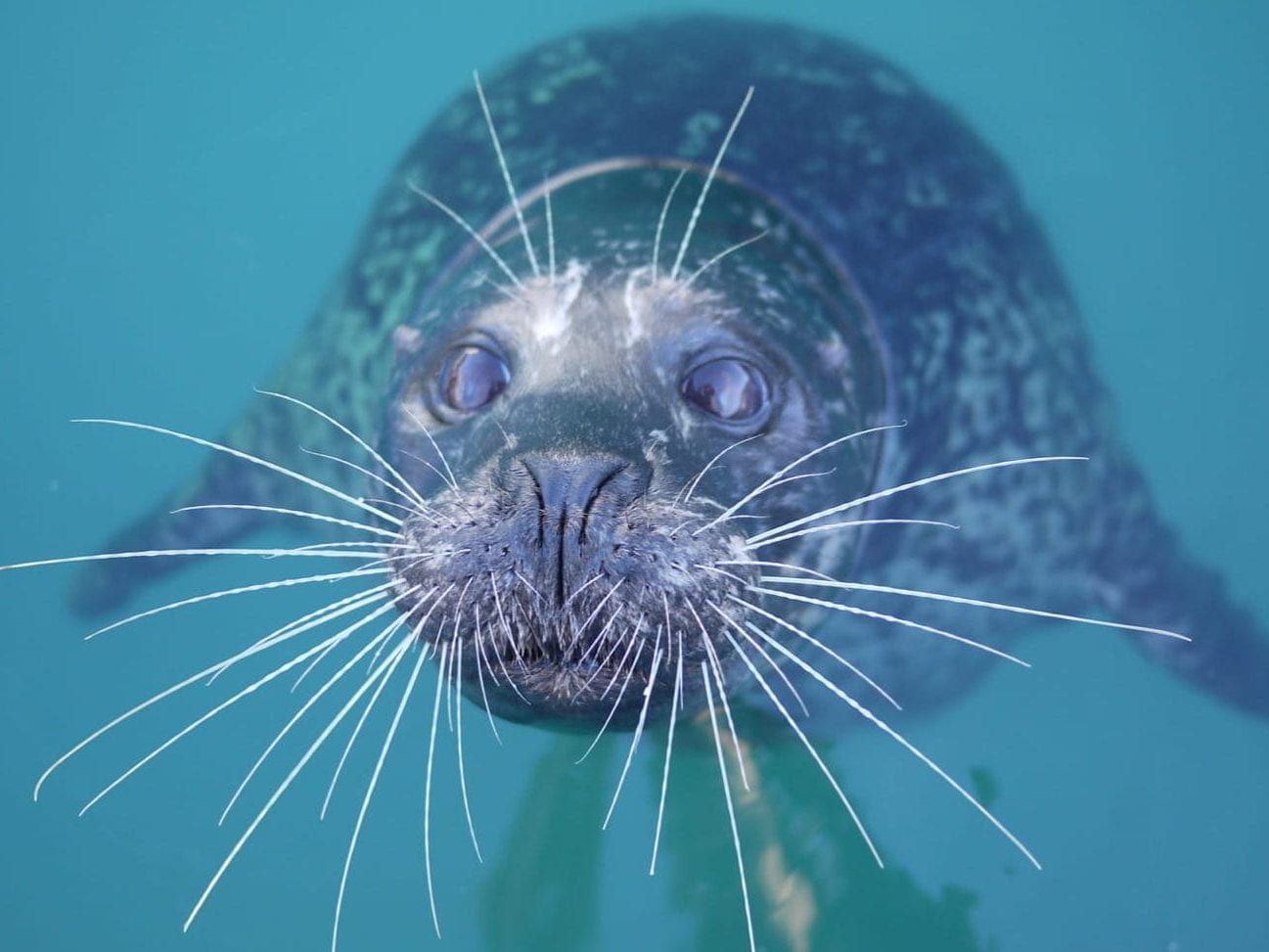
Sprouts – a harbor seal from UCSC Pinniped Lab – with 37 published papers!
As I write this, I’m currently at Chicago’s O’Hare Airport awaiting my flight after a reasonable week at the 184th meeting of the Acoustical Society of America (ASA). The society has been around for over 90 years, having semi-annual meetings (thus the 184th meeting). I started attending around 1998, as I was migrating away from technical facilities design and getting more involved in ocean noise pollution issues.
The Society has changed greatly since I started attending. I am hooked up with the “Animal Bioacoustics” (AB) section – which was known then as “ichths and herps” – Ichthyologists and herpetologists, for their focus on fish, and amphibians and reptiles. At that time, with a few exceptions, the ‘ichths and herps’ were predominantly men. So were all of the other ASA sections – Architectural, Underwater, Oceanographic, Physical, and Medical Acoustics. It was only in the field of Speech and Language Acoustics where you would find any (mostly) women.
Then the Navy Sonar associated whale strandings started happening, and in response, the US Navy started funding research to understand why. This was when more women started entering the Animal Bioacoustics field – to the extent that now AB is attended by many exceptional women, some of whom are running their own academic labs, and is now more known for marine mammals and bats.
The ASA is the more academic of these meetings, and as I am not an academic, I don’t completely mesh with those circles. Nonetheless, you can’t just show up at regular a meeting for 25 years without getting chummy with some of the participants.
I’ll spare you the details on the various sessions on bat bio-sonar and the “acoustic ecology of biological soundscapes,” but the last session I attended on Thursday was really charming. Titled “Contributions of Expert Subjects to Animal Bioacoustics,” we were introduced to an array of animals that people had been, or are working with – in some cases, for decades.
Some of these animals have made star appearances in the press – like Ronan the California Sea Lion who became famous for his rhythmic entraining – dancing to a beat, if you will. But much of the work done with these captive animals has been geared toward understanding how they hear – which is much more complicated than what they hear.
But none of these animals are merely “response machines;” rather they all have complex, and generally delightful personalities. So it was sweet seeing the various researchers get choked up – verklempt, when speaking about these “subjects,” who were all actually research partners – and who they clearly love.

